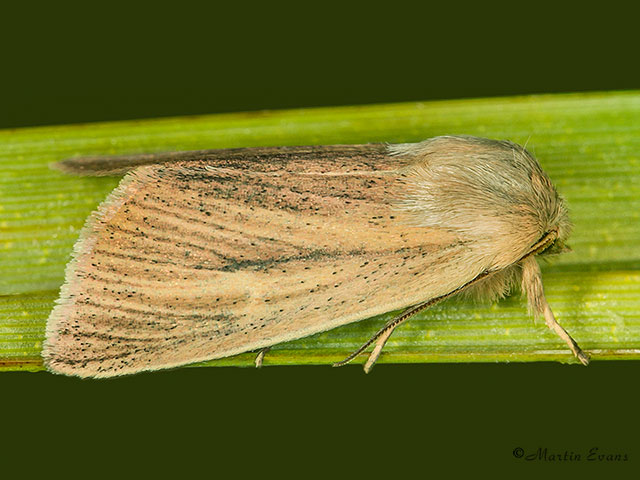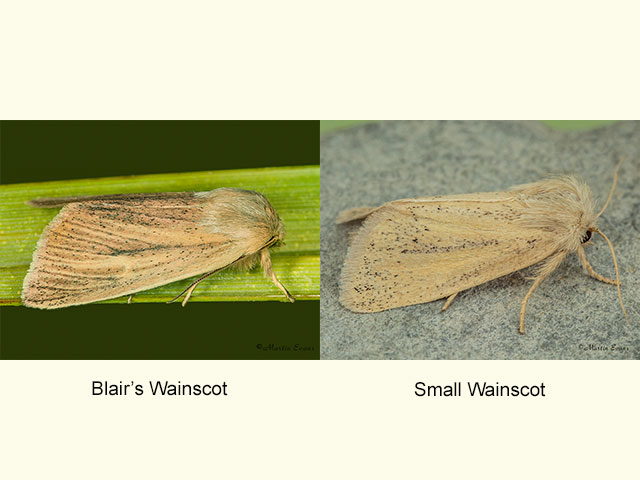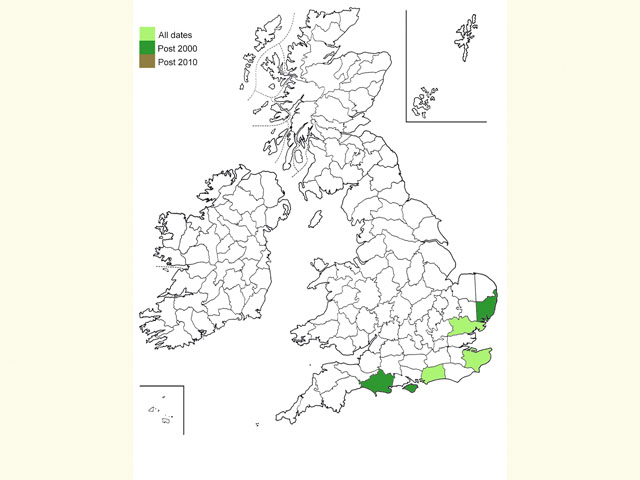Noctuidae
73.135 Blair's Wainscot Sedina buettneri (Hering, 1858)
RDB
Similar species: The size is important in identification as most other similar wainscots are larger. Small Wainscot Denticucullus pygmina is on average smaller (10 to 14mm) with a less angular forewing and a more rounded wing tip.
Forewing: 12 to 14mm
Habitats: Sedge beds in marshy fields that are close to rivers.
Habits: The moth is easily recorded by shining a bright light across the dense stands of Lesser Pond-sedge that it inhabits. The male makes arching flights across the sedges and then rests on the foodplant. This is repeated for about an hour or so after it is fully dark. The moth also comes to light that is placed in or close to the foodplant.
Foodplant: The larva feeds in the stems of young shoots of Lesser Pond-sedge. In captivity it will accept Reed Sweet-grass. It pupates in a stem, low down near the ground.



